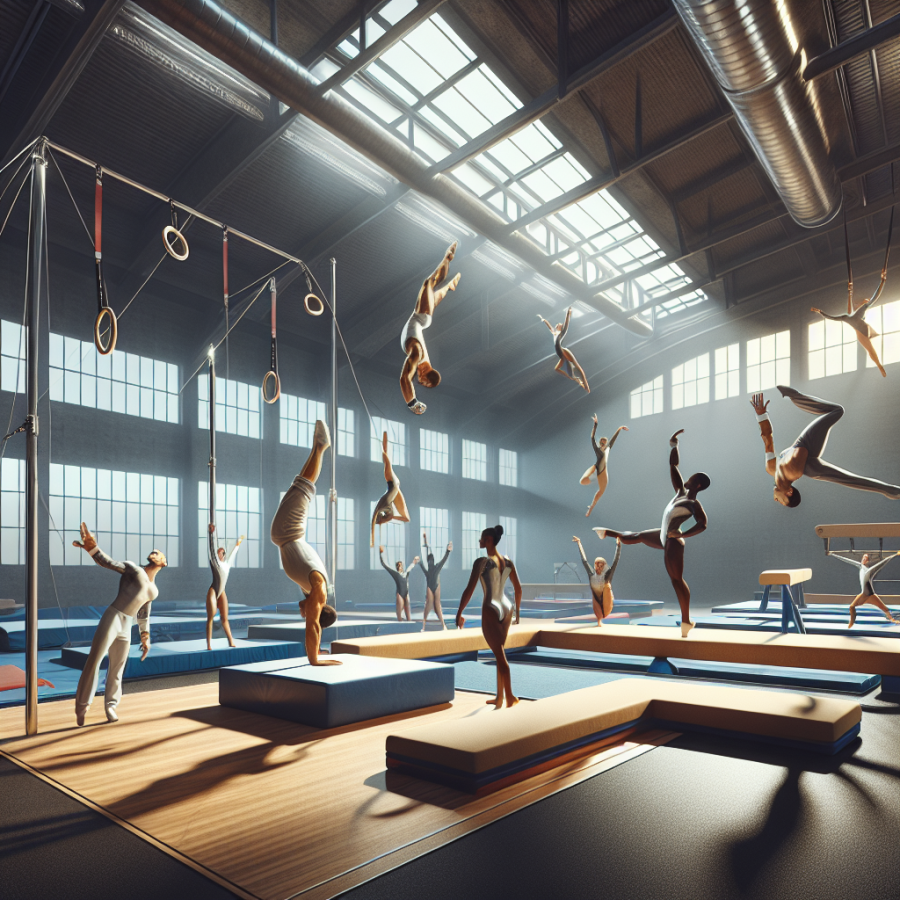Merging Artistry and Strength: How Gymnastics is Redefining Modern Fitness
Gymnastics has long been known as a sport that demands incredible strength, flexibility, and precision. However, what many don't realize is that the discipline's unique blend of artistry and athleticism is pushing it to the forefront of modern fitness trends. It's not simply about competing at the Olympics or world championships; it's about integrating gymnastics principles into everyday fitness routines to revolutionize the way we approach our health and bodies.
One of the most notable aspects of gymnastics is its emphasis on bodyweight exercises. This reliance on one's own weight to build strength and muscle is a principle that has been widely adopted in fitness regimens worldwide. Exercises like pull-ups, push-ups, and planks have their roots in gymnastics and are now staples in many workout routines. What gymnastics adds to these exercises is the focus on form, control, and precision, enhancing their effectiveness.
Moreover, gymnasts are required to perform complex movements that challenge multiple muscle groups at once. The core, for instance, is not just about having a six-pack; it's about having the stability and control to execute skills on the various apparatus. This emphasis on core strength is echoed in modern fitness, where a solid core is recognized as a key component for overall body strength and injury prevention.
Flexibility is another gymnastic hallmark that has permeated the fitness world. The flexibility required for splits, backbends, and high kicks transcends the gymnastic arena and is now considered a fundamental aspect of fitness for improving range of motion and reducing the risk of injury.
Artistry comes into play when considering the performance aspect of gymnastics. Each routine is carefully choreographed, combining strength and flexibility with grace and beauty. This artistry can transform a fitness routine from mere exercise to an expression of movement. Many movement-based disciplines such as dance, barre workouts, and even certain styles of yoga have been influenced by the artistic side of gymnastics.
Furthermore, the mental fortitude and concentration developed in gymnastics training are invaluable traits that lend themselves to other areas of fitness and life. Gymnasts learn to perform under pressure, visualize success, and practice routines repeatedly until perfected. These skills are just as useful in a crowded gym as on the competition floor.
Cross-training with gymnastic techniques is increasingly popular among professional athletes in other sports as well. This cross-pollination boosts performance, aids in rehabilitation from injuries, and helps maintain peak physical condition.
Read also:
Tokenizing the Field: Cryptocurrency's Impact on Sports
Pushing the Boundaries: Gymnastics and the Evolution of Athletic Performance
The realm of gymnastics is not just confined to competitions and elite athletes performing gravity-defying routines; it significantly contributes to the ongoing evolution of athletic performance across various sports disciplines. By pushing the boundaries of what the human body can achieve, gymnastics has revolutionized fitness and training methodologies. Its pivotal role in athletic development showcases a dynamic interplay of strength, flexibility, agility, and mental fortitude, which has led to enhanced performance parameters in numerous sports fields.
Gymnastics-trained athletes are often lauded for their exceptional core strength, a fundamental attribute attributable to the myriad of bodyweight exercises and apparatus routines that are staples of the sport. This core strength is foundational for all movement and is directly transferable to other sports, enhancing stability and power. A gymnast's training regimen, which entails holding static positions and executing explosive movements, translates to a remarkable increase in isometric strength and plyometric power, essential components in sports ranging from track and field to football.
Flexibility is another facet where gymnastics has set a precedent. Having a substantial range of motion is immensely beneficial in reducing the risk of injuries and improving overall athletic performance. Gymnasts exemplify how flexibility can be incorporated into strength routines to achieve feats such as complex vaults and balancing maneuvers. This approach towards training has influenced other areas of fitness, prompting athletes to integrate stretching and flexibility work into their regimens for optimal performance and injury prevention.
Furthermore, gymnastics places a significant emphasis on body control and spatial awareness. These skills are vital in all athletic endeavors as they allow for more precise and controlled movements. Athletes from disciplines such as diving, figure skating, and even basketball have recognized the advantages of gymnastic training to improve their air awareness, coordination, and grace under pressure.
Another dimension where gymnastics champions excellence is in mental toughness. The intense focus required to consistently perform high-risk routines under competitive stress has direct applications in sports psychology. Learning to remain composed and maintain concentration amidst distractions is a skill that is invaluable not only within the gymnastic arena but also in numerous other high-pressure sporting contexts.
The technological advances in sports science have also played a role in enhancing gymnastic training techniques, with state-of-the-art equipment and analytical tools developing more sophisticated training programs. These tools allow for precise bio-mechanical analysis, enabling a gymnast to make incremental improvements in their technique, thus pushing the envelope of what is considered possible.




